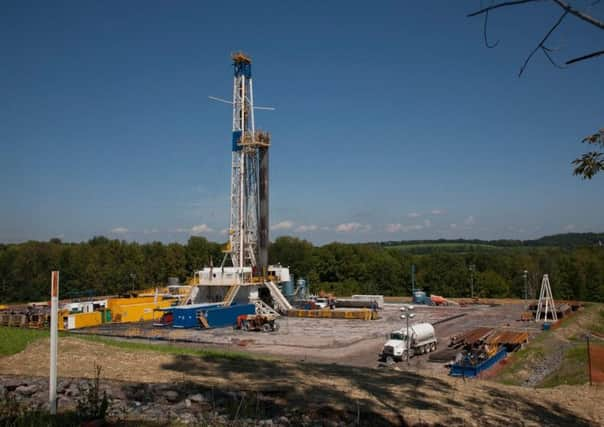Earthquake damage fears as fracking link proven


Fracking, which involves high-pressure injections of fluid to break apart rock and release trapped natural gas, has been strongly linked to an increase in seismic activity in the region.
The news will provide strong ammunition to the protestors objecting to the ongoing exploratory drilling on potential fracking sites across large parts of Yorkshire and the North, including the North Yorkshire Moors national park.
Advertisement
Hide AdAdvertisement
Hide AdThe Canadian study’s findings, published online by the journal Seismological Research Letters, differ from those reported from oil and gas fields in the central United States, where fracking is not considered to be the main cause of a sharp rise in induced seismic activity.
Instead, the proliferation of hundreds of small earthquakes in the US is thought to be caused primarily by massive amounts of wastewater injected back into the ground after oil and gas recovery.
The new study does not examine why induced seismicity would be linked to different processes in the central US and western Canada.
But Doctor Gail Atkinson, of Western University in California, said some oil and gas fields in the US, especially Oklahoma, use “very large amounts of water” in their operations, leading to much more wastewater disposal than in Canadian operations.
Advertisement
Hide AdAdvertisement
Hide AdDr Atkinson said it is possible that massive wastewater disposal in the US is “masking another signal” of induced seismicity caused by fracking.
She added: “We are not entirely sure that there isn’t more seismicity in the central US from hydraulic fracturing than is widely recognised.”
Both fracking and wastewater injections can increase the fluid pressure in the natural pores and fractures in rock, or change the state of stress on existing faults, to produce earthquakes.
The Western Canada Sedimentary Basin (WCSB) contains one of the world’s largest oil and gas reserves, and is dotted with thousands of fracking wells.
Advertisement
Hide AdAdvertisement
Hide AdDr Atkinson and her colleagues compared the relationship of 12,289 fracking wells and 1,236 wastewater disposal wells to magnitude trhee or larger earthquakes in an area of 454,000 square kilometres near the border between Alberta and British Columbia, between 1985 and 2015.
Researchers carried out statistical analyses to work out which earthquakes were most likely to be related to fracking, given their location and timing.
The analyses identified earthquakes as being related to fracking if they took place close to a well from the start of the process to a period three months its completion and if other causes, such as wastewater disposal, were not involved.
The researchers found 39 hydraulic fracturing wells - 0.3 per cent of the total of fracking wells studied, and 17 wastewater disposal wells - one per cent of the disposal wells studied - that could be linked to earthquakes of magnitude three or larger.
Advertisement
Hide AdAdvertisement
Hide AdWhile the percentages sound small, Dr Atkinson pointed out that thousands of hydraulic fracturing wells are being drilled every year in the region, increasing the likelihood of earthquake activity.
She said: “We haven’t had a large earthquake near vulnerable infrastructure yet, but I think it’s really just a matter of time before we start seeing damage coming out of this.”
The study also confirmed that in the last few years nearly all the region’s overall seismicity of magnitude three or larger has been induced by human activity.
Dr Atkinson said more than 60 per cent of those earthquakes are linked to hydraulic fracture, about 30 to 35 per cent come from disposal wells, and only five to 10 per cent of the earthquakes have a natural tectonic origin.
Advertisement
Hide AdAdvertisement
Hide AdShe added: “Everything has been designed and assessed in terms of earthquake hazard in the past, considering the natural hazard.
“And now we’ve fundamentally changed that, and so our seismic hazard picture has changed.
“It had previously been believed that hydraulic fracturing couldn’t trigger larger earthquakes because the fluid volumes were so small compared to that of a disposal well.
“But if there isn’t any relationship between the maximum magnitude and the fluid disposal, then potentially one could trigger larger events if the fluid pressures find their way to a suitably stressed fault.”